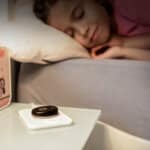After School Activities and Hearing Implants: What to Do?

Once your child has gotten through his or her school day, odds are that there will be a range of activities that he or she can do: playing sports, going out with friends, doing homework, reading, and more. With all of this going on it might be confusing to know what to do with the audio processor and how to keep it safe. So, here are some tips that you can use to keep your child hearing and enjoying the time after school.
Sports and Extracurricular Activities
Taking up extracurricular activities is a great idea for a child who has a hearing implant. They are opportunities for making friends, expanding interests, and becoming a part of the local community. Depending on what activities he or she takes up, there are different ways you can make sure to take care of the audio processor.
For sports, one of the most important parts is to protect the processor from impacts or falls.
- If your child plays a contact sport, make sure to wear a helmet that allows proper wearing of the audio processor. Because modifying a helmet can make it unsafe, check around different shops or brands to make sure that you find the right one for your child.
- For sports, like dance or soccer, that don’t require a helmet, make sure to secure the processor in another way. Using hair or attachment clips, different wearing options, or the MED-EL Sports Headband can let your child enjoy hearing no matter what the sport is.
- When swimming or doing other activities around water, take care. You can go swimming with the RONDO audio processor while using the WaterWear, but the SONNET, OPUS 2, and Amadé audio processors should be removed.
When Doing Homework
As with many children, an easy way to make sure that homework is completed is to have an after-school schedule. For cochlear implant recipients especially, talking with your child’s teacher about how much time is reasonable to set aside each night.
Stay aware of your child’s homework and habits:
- Keep up on how much help your child needs to complete his or her homework, how much time it takes, and how comfortable they feel.
- Show that you supporting your child and that he or she can always come to you with questions or when they need help.
- If you’re noticing that he or she isn’t able to manage completing the amount of homework that is giving, there’s no trouble with talking to the teacher to find the best solution.
- Most child cochlear implant recipients will benefit from being taught concepts and language before they are introduced in the class. Talk with the teacher to see if you can bring home information about classroom lessons ahead of time so that you can briefly introduce these to your child.
Family Meals
If school is where your child practices his or her listening and communication skills, at home is where these skills are developed. Having family meals is a great way to develop these because its somewhere the whole family can talk and listen.
To get the most out of this time, keep background noise to a minimum. This way it can be easier for your child to hear everyone’s voice. And, encourage everyone to talk about each of their days and ask questions about the others’ days.
Bath Time
Always make sure to keep your child’s audio processor in a safe place. The SONNET is protected from moisture and sweat, but the OPUS 2, Amadé, and RONDO without the WaterWear should be removed. Set the processor somewhere visible so that your child knows his or her audio processor isn’t gone forever.
Bedtime
As with all children, the time just before bedtime is a great opportunity to read aloud to your child. While they are still wearing their audio processor, let them lie in bed or curl up next to you as you read aloud or show them a picture book. Or, just talk about your day on a one-to-one level: ask your child if he or she has any questions about the day, or ask them questions about what their favorite parts of the day were.
When it comes time to remove the audio processor, make sure to always tell them that you are going to remove it. Then, remove it and place it the same spot where it always goes. This way they will not be surprised when the processor comes off, and will always know where it is in the morning.
Here are some ways to care for the processor just before putting it away:
- Wipe it down with a clean and dry cloth to remove any dust or moisture.
- If you’re putting it in a drying kit, make sure that the kit is dry and the drying capsule is active.
- Remove the batteries before putting it in the kit, or turn off the processor if you don’t.
This post was written with help from Shruti Gulvadi, a clinical specialist who focuses on audiology.
Thanks for your message. We will reply as soon as possible.
Send us a message
Field is required
John Doe
Field is required
name@mail.com
Field is required
What do you think?


